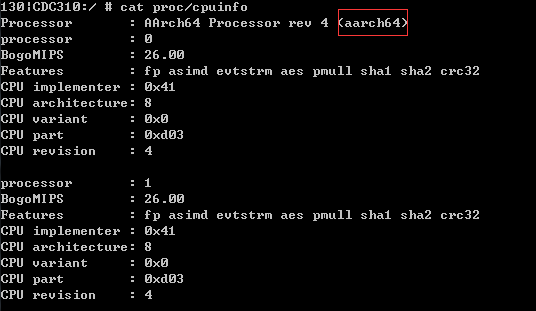


All is still good, but if traffic gets a little heavier, things are going to slow down.
#Proc cpuinfo mac drivers#
If cars are backed up, drivers know they're in for delays. If no cars are waiting, incoming drivers know they can drive across right away. A decent metric would be how many cars are waiting at a particular time. You want to let folks know how traffic is moving on your bridge. sometimes your bridge is so busy there are cars lined up to cross. The traffic analogyĪ single-core CPU is like a single lane of traffic. We'll start out with the simplest case: a machine with one single-core processor. But, what's the threshold? What constitutes "good" and "bad" load average values? When should you be concerned over a load average value, and when should you scramble to fix it ASAP?įirst, a little background on what the load average values mean. Higher numbers represent a problem or an overloaded machine. It’s not just in docker containers where this could be an issue of course, you can use the same mechanism that docker uses anywhere you want to control resources of a process.Īnother subtle thing to watch out for is differences in /proc/cpuinfo content depending on CPU architecture.Most people have an inkling of what the load averages mean: the three numbers represent averages over progressively longer periods of time (one, five, and fifteen-minute averages), and that lower numbers are better. So, what this will end up doing is just increase the number of context switches, possibly also adding a performance degradation. You also get the wrong answer, as you do by grepping /proc/cpuinfo. In this case, if you base your number of threads off grepping lscpu you take another dependency (on the util-linux package), which isn’t needed.
#Proc cpuinfo mac software#
$ docker run -cpuset-cpus=0-2 -rm=true -it amazonlinux:2Īs you can see, nproc here gets the right bit of information, so if you’re wanting to do a calculation such as “Please use up to the maximum available CPUs” as a parameter to the configuration of a piece of software (such as how many threads to run), you get the right number.īut what if you use some of the other common methods? $ /usr/bin/lscpu -p | grep -c "^"īash-4.2# /usr/bin/lscpu -p | grep -c "^"īash-4.2# grep -c 'processor' /proc/cpuinfo $ docker run -cpuset-cpus=0-1 -rm=true -it amazonlinux:2 What’s a simple example? Containers! Did you know that when you invoke docker to run a container, you can easily limit how much CPU the container can use? In this case, we’re looking at the -cpuset-cpus parameter, as the -cpus one works differently.
#Proc cpuinfo mac code#
So, what does that actually mean? Well, just because the computer some code is running on has a certain number of CPUs (and here I mean “number of hardware threads”) doesn’t necessarily mean that you can spawn a process that uses that many. Print the number of processing units available to the current process, which may be less than the number of online processors. If you look at the man page, it’s even the very first sentence: There’s something really quite subtle about how the nproc utility from GNU coreutils works.


 0 kommentar(er)
0 kommentar(er)
